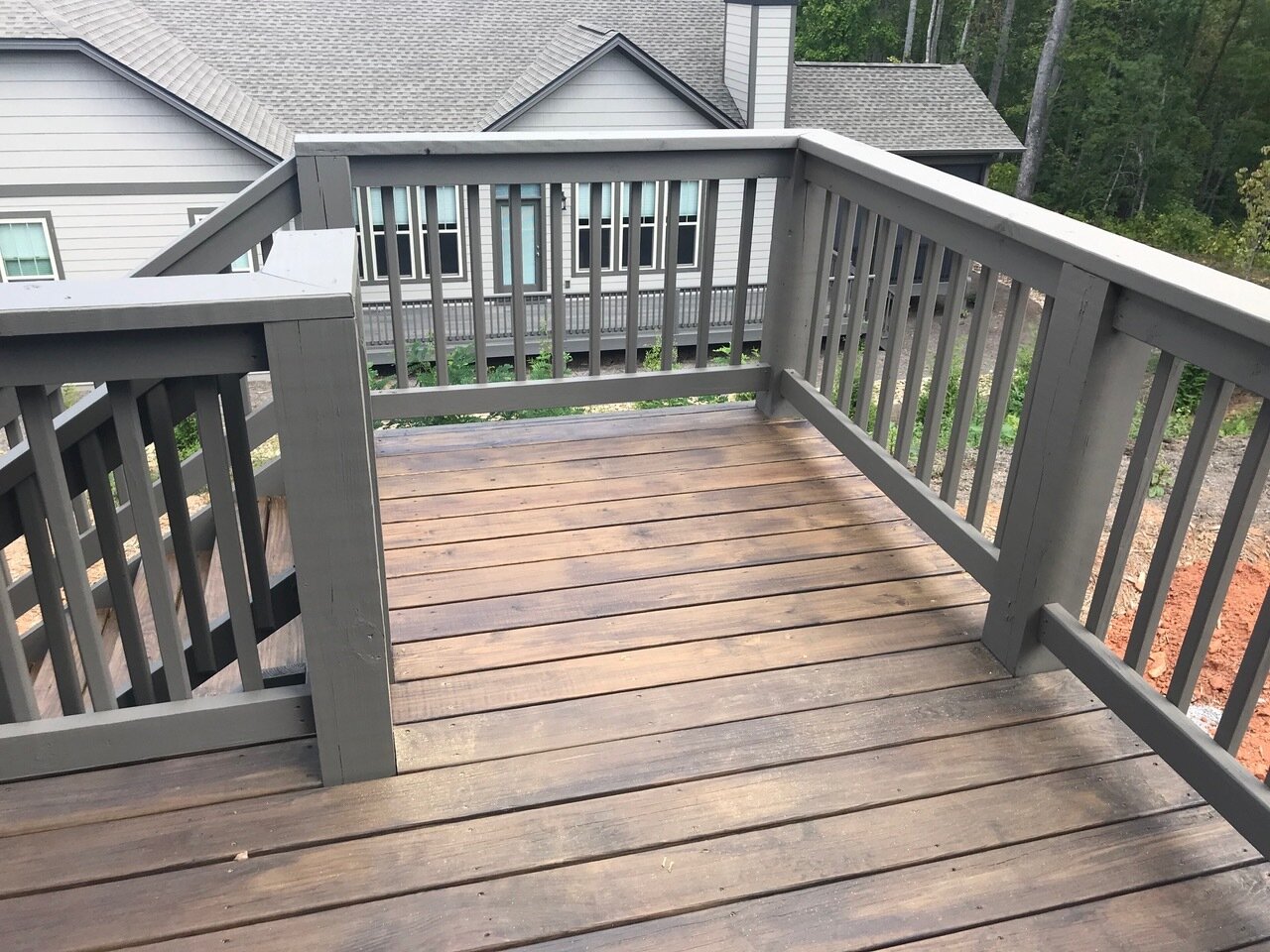A Comprehensive Overview to Various Kinds Of Deck Discoloration Techniques for Ultimate Protection and Aesthetic Appeals
In the world of deck upkeep, the art of discoloring stands as a pivotal step in the direction of both protecting the honesty of your outside space and enhancing its visual charm. As we navigate through the detailed globe of deck staining techniques, one starts to appreciate the nuanced techniques that can make all the distinction between an average coating and a perfect one.
Understanding Various Kinds of Stains
Numerous types of stains are frequently utilized in the procedure of deck staining to achieve various visual and safety effects. On the various other hand, semi-transparent spots offer an equilibrium between color enhancement and protection, permitting some wood grain to show via.
Toners add a hint of color to the timber while supplying marginal defense, making them ideal for newer decks with less wear. Understanding the attributes and advantages of each kind of tarnish is important for achieving the preferred appearance and resilience for your deck.
Selecting the Right Stain Color
When taking into consideration the looks of your deck staining project, the selection of discolor color plays a critical role in enhancing the safety high qualities of the picked discolor type (Water-Based Stains). The shade you select can significantly affect the total look of your deck, as well as its ability to hold up against the components gradually
When picking a stain shade, it's important to consider the existing color pattern of your home's outside. Harmonizing the deck discolor with the overall aesthetic of your building can create a natural and visually appealing exterior space. Furthermore, the color of your deck discolor can affect the temperature level of the deck surface; darker colors often tend to soak up even more warmth, while lighter colors mirror sunshine and remain cooler.
In addition, the kind of timber you are tarnishing will certainly additionally influence how the stain shade appears. Various wood varieties can communicate with the stain in numerous ways, possibly changing the final shade. It's advisable to check the discolor on a little, unnoticeable location of the deck to guarantee the shade ends up as wanted before waging the entire task.
Preparing Your Deck for Discoloration
To ensure a effective and durable deck discoloration task, comprehensive prep work of the deck surface area is crucial. Begin by cleaning up the deck completely to eliminate dirt, gunk, mildew, and any type of old tarnish or complete.
Examine the deck for any harmed or rotten boards that require to be changed. Hammer down any kind of extending nails and sand any harsh locations to make certain a smooth surface area for discoloration. Inspect for any type of loose barriers or actions that may need tightening up or repair service.
When the deck is clean, completely dry, and in good fixing, think about applying a timber brightener to restore the deck's natural shade and open the wood pores for much better tarnish infiltration. Shield any type of neighboring plants, furniture, or surface areas with plastic sheeting before continuing with the staining procedure. Proper preparation is vital to achieving a professional-looking coating and taking full advantage of the long life of your deck discolor.
Using Discoloration With Different Strategies
For a specialist and flawless surface, the technique of using stain plays a critical role in improving the look and durability of your deck. There are a number of methods you can make use of to ensure an efficient application of discolor.
Cleaning is a traditional approach that enables for accuracy and control over the quantity of tarnish used. It is perfect for elaborate locations and getting to in between deck boards (Stain Deck). Rolling is a quicker choice, covering larger surface locations effectively. Nonetheless, back-brushing after rolling is advised to also out the tarnish and function it right into the timber for better penetration.
Splashing is another preferred strategy, providing speed and ease of application, specifically for big deck areas. Whichever strategy you select, you could try these out ensuring correct preparation and adhering to maker guidelines will certainly help attain a lovely and lasting stain surface on your deck.

Maintaining and Re-staining Your Deck
Proper upkeep and prompt re-staining are necessary for protecting the charm and durability of your deck. Regular upkeep jobs include sweeping particles, cleansing with a deck cleaner, and checking for any type of signs of wear or damages. Attending to problems promptly can prevent much more substantial issues in the future. When it comes to re-staining your deck, the regularity relies on different elements such as the kind of discolor used, the environment in your location, and just how much deterioration your deck experiences. Generally, it is suggested to re-stain your deck every 2-4 years to preserve its protection and visual appeals.
Before re-staining, guarantee the deck is clean, completely dry, and cost-free of any kind of previous stain residue. Choose a premium tarnish that matches your deck's product and gives the desired level of protection.
Conclusion
Finally, comprehending the different kinds of deck spots, selecting the ideal browse around these guys shade, appropriately preparing the deck, using tarnish with different methods, and keeping and re-staining the deck are necessary actions for utmost security and looks. By adhering to these actions, you can make sure that your deck stays in top condition for years ahead.
Furthermore, the shade of your deck discolor can influence the temperature level of the deck surface area; darker shades have a tendency to absorb even more warmth, while lighter colors go to this website reflect sunshine and remain cooler.
It's a good idea to evaluate the stain on a tiny, low-profile area of the deck to ensure the shade turns out as desired prior to proceeding with the entire task.
